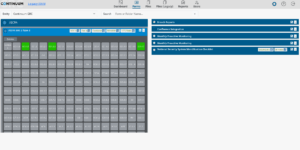Examiner: Form Control Groups
Table of Contents
ToggleOverview
In many forms, a group of fields defines a single control. For example, a control might require an assigned value, some text to support the option chosen, and some files for evidence. A Control Group is a container containing one or more fields, allowing them to be labeled as a group and treated as a single control.
This guide section will look at working with data entered into Control Groups and other ways a Control Group influences your interactions with users and their data. If appropriately used, control groups can become a powerful tool in your arsenal that helps organizations achieve compliance.
Working with Control Groups in a Form
Working with a control group within a form is no different than entering data in any other field. Grouping the fields in a control group adds additional features outside of a form, but there is no difference when entering data.
Working with Control Groups Outside a Form
As an Examiner, one of the more powerful features of Control Groups is how they enhance your ability to grasp a quick picture of compliance against a particular form or standard. Properly combining Control Groups to match the controls in a framework will create a powerful tool allowing you to quickly garner an overview of an entity's status against the compliance goals.
Heat Map Tiles
When a form you are working with has one or more Control Groups, the system automatically adds a heat map of the existing control groups to the information displayed for that form in the Dashboard and My Forms screens.
Regardless of which interface you are looking at, the heat map works the same way, displaying a representation of the Control Groups in a color-coded grid. Each control group tile is assigned a color based on the calculated Maturity Score. The value of the score will be between 0 and 100 and displayed in a gradient color, moving from red to green as the score increases. This lets you see what needs the most attention in a form at a glance. If there is no data yet, the tiles will be gray.
The tiles representing a control group also act as a quick navigation option. Clicking on a tile will bring you directly to that control group in the form, displaying it and the fields inside of it.
From the control group's form view, you can update it or add Action ITAMs, just like the normal editing process. Unlike the normal flow of updating a form, clicking Continue or Exit will save the data and bring you back to the Dashboard.
